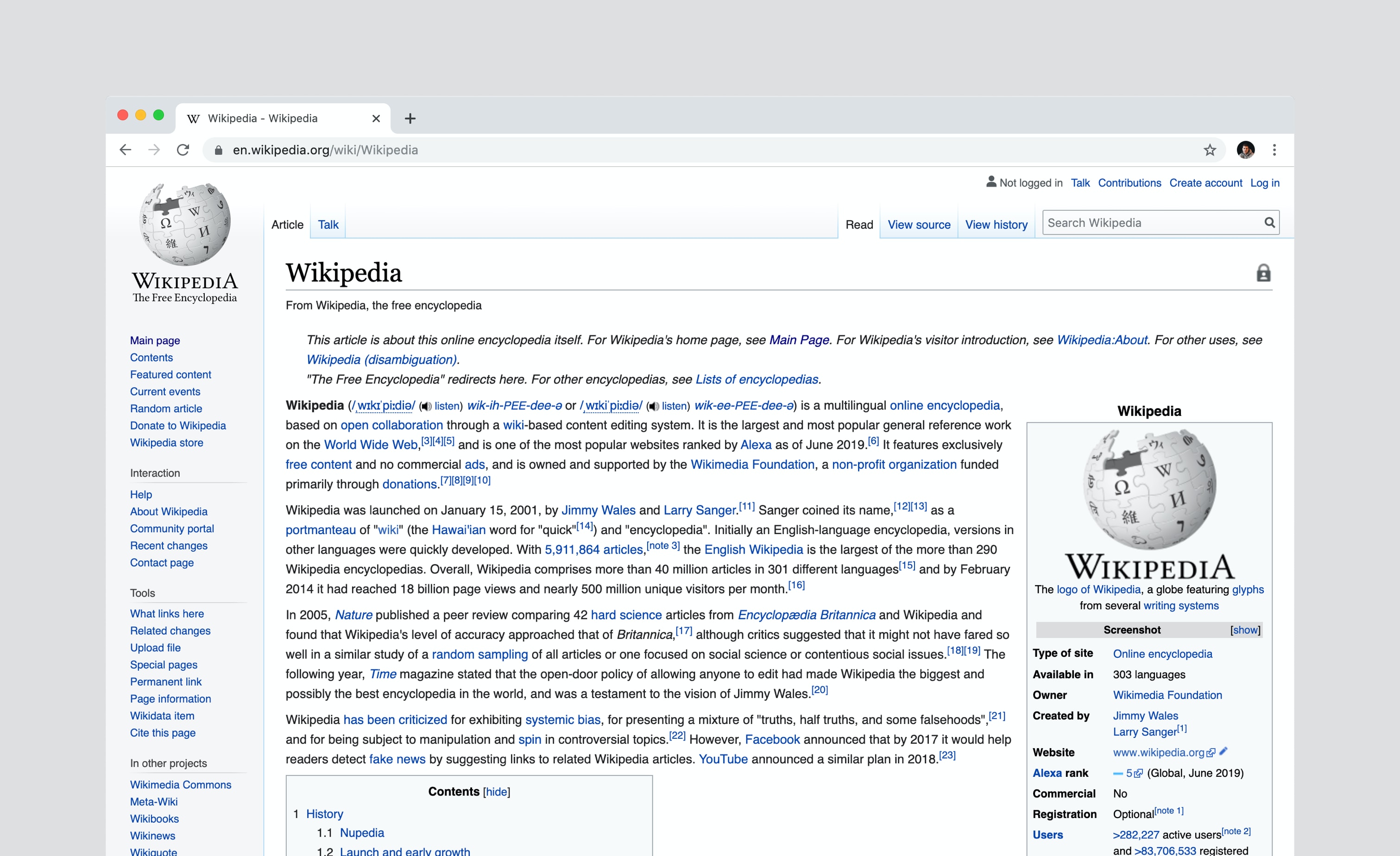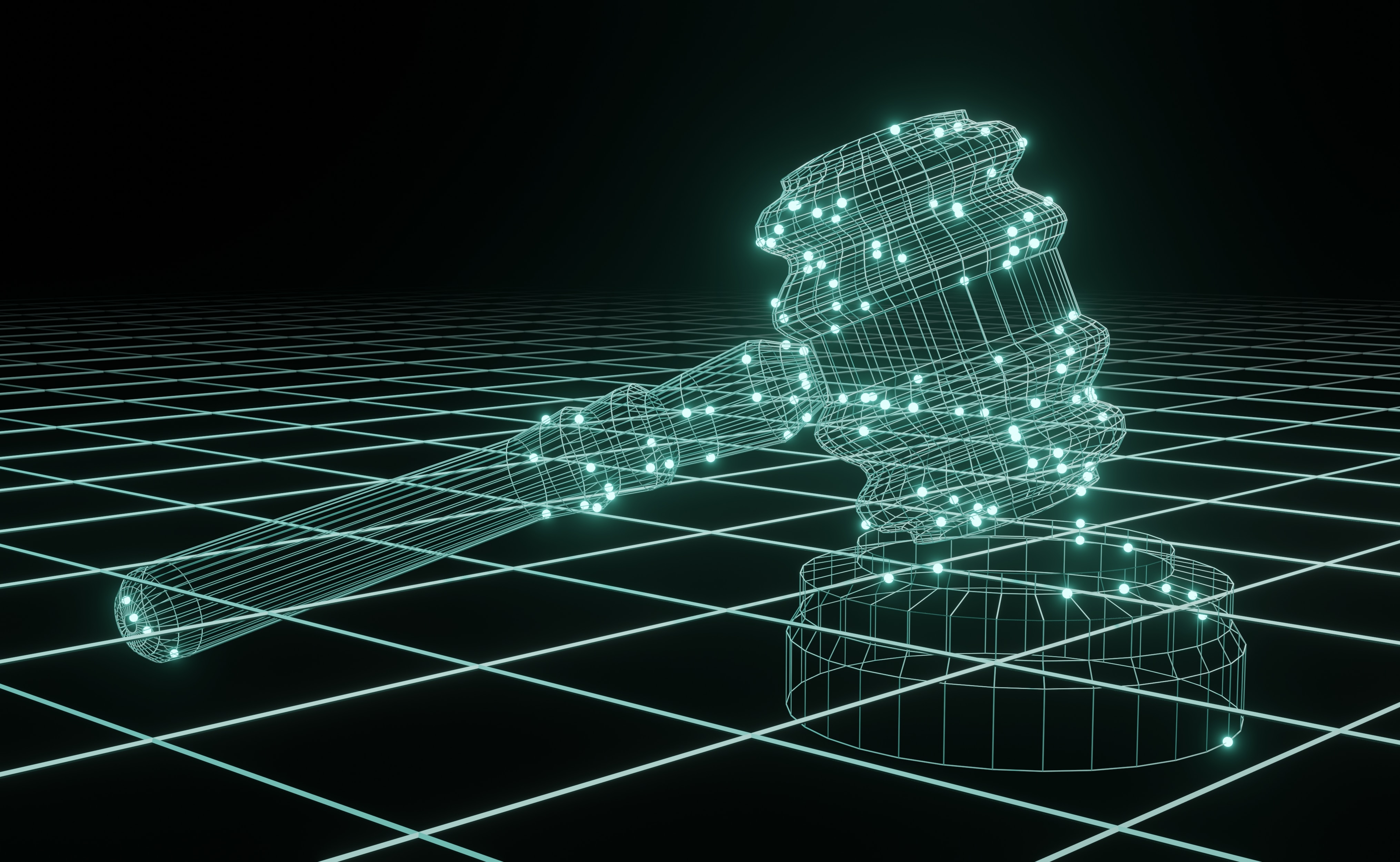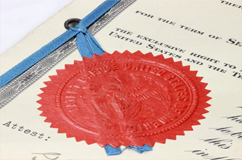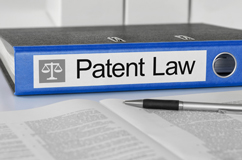
Democratising case law while teaching Students
This article draws on qualitative student feedback and lecturer experience to provide a guide for educators who are interested in creating Wikipedia article-based assignments. Using legal cases as an example, this article details how these assignments can encourage students to deepen their understanding of a topic and consider how knowledge can be communicated effectively. In particular, this article focuses on how educators outside of the United States and Canada can navigate Wikipedia’s bureaucracy and how they and their students can contribute information of relevance to smaller jurisdictions on a publicly-accessible repository. This article begins by addressing concerns that educators may have with student use of Wikipedia, while highlighting pedagogical benefits for students who write Wikipedia articles. It goes on to provide a guide for educators who want to create a Wikipedia article writing assignment – in particular, the preparatory steps required to make the assignment effective, how to support students in their writing journey, and how to better ensure that student-authored articles remain available on Wikipedia. This article concludes by encouraging educators to consider using Wikipedia as an educational tool, and to teach their students how they can use Wikipedia article writing to contribute to public knowledge.

The effect of conference presentations on the diffusion of ideas
(Citation)
Teplitskiy, M., Park, S., Thompson, N., & Karger, D. (2022). The effect of conference presentations on the diffusion of ideas. ArXiv. /abs/2209.01175
Conferences are ubiquitous in many industries, but how effectively they diffuse ideas has been debated and the mechanisms of diffusion unclear. Conference attendees can adopt ideas from presentations they choose to see (direct effect) or see incidentally (serendipity effect). We quantify these direct and serendipitous effects of academic conference presentations on future citations by exploiting quasi-random scheduling conflicts. When multiple papers of interest to an attendee are presented at the same time, the person is less able to see them on average and, if seeing presentations is important, cites them less. We use data from Confer, a scheduling application deployed at 25 in-person computer science conferences that lets users Like papers and receive personalized schedules. Compared to timeslots with many conflicts, users cited Liked papers with no scheduling conflicts 52% more. Users also cited non-Liked papers in sessions with no conflicts 51% more, and this serendipitous diffusion accounted for 22% of the overall diffusion induced by presentations. The study shows that conference presentations stimulate substantial direct and serendipitous diffusion of ideas, and adds the analysis of scheduling conflicts to the toolkit of management scholars.

Should Firms Hold More Patents? A Randomized Control Trial on the Commercial Value of Patents
Thompson, N., Kang, H., & Khairullina, A. (2023). Should Firms Hold More Patents? A Randomized Control Trial on the Commercial Value of Patents. In Academy of Management Proceedings (Vol. 2023, Issue 1). Academy of Management. https://doi.org/10.5465/amproc.2023.18845abstract
Globally, firms spend approximately $1.7 trillion on R&D, much of which is aimed at producing patentable innovations. But using patents to cut off competitors’ access to an innovation is expensive to get and to maintain, costing an average of $1–2 million for global protection. That expense is only worthwhile if the exclusivity generated by the patent provides enough commercial value for the firm, principally through higher sales or profitability in the product market. In practice, making decisions whether to get or maintain patents is difficult because firms often can’t quantify the commercial value of a patent, even after the fact, because they never observe the performance of an equivalent innovation that is unpatented. Academics have been similarly stymied in quantifying the commercial value of patents because of (1) strong selection into which innovations are patented, (2) the difficulty in connecting patent protection to specific products, and (3) the commercial sensitivity of product-level financial data. This paper presents the first randomized control trial to evaluate the commercial value of maintaining patent protection. In collaboration with a large multinational company, patents covering products in the marketplace were either abandoned or maintained at random. We then traced the effects of patent protection on product-level commercial outcomes using confidential internal data. On the margin, products protected by patents generated 35% more revenue for the firm, primarily through higher unit sales. Maintaining these patents was highly cost effective, yielding $67 in additional benefits for each dollar spent. Insomuch as the patenting behavior of the firm in our study is representative, our results suggest that firms should be maintaining more patent protection on products.

User-Generated Content Shapes Judicial Reasoning: Evidence From a Randomized Control Trial on Wikipedia
Thompson, Neil and Luo, Xueyun and McKenzie, Brian and Richardson, Edana and Flanagan, Brian, User-Generated Content Shapes Judicial Reasoning: Evidence From a Randomized Control Trial on Wikipedia (January 18, 2023). Available at SSRN: https://ssrn.com/abstract=4327890 or http://dx.doi.org/10.2139/ssrn.4327890
Legal professionals have access to many different sources of knowledge, including user-generated Wikipedia articles that summarize previous judicial decisions (i.e., precedents). While these Wikipedia articles are easily accessible, they have unknown provenance and reliability and therefore using them in professional settings is problematic. Nevertheless, Wikipedia articles influence legal judgments, as we show using a randomized control trial.
We find that the presence of a Wikipedia article about Irish Supreme Court decisions makes it meaningfully more likely that the corresponding case will be cited as a precedent by judges in subsequent decisions. The language used in the Wikipedia article also influences the language used in judgments. These effects are only present for citations by the High Court, not for the higher levels of the judiciary (Court of Appeal and Supreme Court). Since the High Court faces higher caseloads, this may indicate that settings with greater time pressures encourage greater reliance on Wikipedia.
Our results add to the growing recognition that Wikipedia and other frequently-accessed sources of user-generated content have profound effects on important social outcomes. Greater attention should therefore be paid to ensuring that they contain the highest quality of information.

Trial by Internet: A Randomized Field Experiment on Wikipedia’s Influence on Judges’ Legal Reasoning
Thompson, Neil and Flanagan, Brian and Richardson, Edana and McKenzie, Brian and Luo, Xueyun, Trial by Internet: A Randomized Field Experiment on Wikipedia’s Influence on Judges’ Legal Reasoning (July 27, 2022). Forthcoming in Cambridge Handbook of Experimental Jurisprudence, editor Kevin Tobia, Cambridge University Press, Available at SSRN: https://ssrn.com/abstract=4174200 or http://dx.doi.org/10.2139/ssrn.4174200
In the common law tradition, legal decisions are supposed to be grounded in both statute and precedent, with legal training guiding practitioners on the most important and relevant touchstones. But actors in the legal system are also human, with the failings and foibles seen throughout society. This may lead them to take methodological shortcuts, even to relying on unknown internet users for determinations of a legal source’s relevance.
In this chapter, we investigate the influence on legal judgments of a pervasive, but unauthoritative source of legal knowledge: Wikipedia. Using the first randomized field experiment ever undertaken in this area—the gold standard for identifying causal effects—we show that Wikipedia shapes judicial behavior. Wikipedia articles on decided cases, written by law students, guide both the decisions that judges cite as precedents and the textual content of their written opinions. The information and legal analysis offered on Wikipedia led judges to cite the relevant legal cases more often and to talk about them in ways comparable to how the Wikipedia authors had framed them.
Collectively, our study provides clear empirical evidence of a new form of influence on judges’ application of the law—easily accessible, user-generated online content. Because such content is not authoritative, our analysis reveals a policy-gap: if easily-accessible analysis of legal questions is already being relied on, it behooves the legal community to accelerate efforts to ensure that such analysis is both comprehensive and expert.

Why Innovation’s Future Isn’t (Just) Open
Thompson, Neil C., Didier Bonnet, and Yun Ye. 2020. Why Innovation’s Future Isn’t (Just) Open. MIT Sloan Management Review. Summer 2020.
Innovating with external partners doesn’t always give companies a competitive advantage. It needs to be balanced with internal efforts.

How Corporations Source Innovation
Thompson, Neil C., Didier Bonnet, and Sarah Jaballah. 2020. Sourcing Innovation in the Digital Age. Online at SSRN: https://papers.ssrn.com/sol3/papers.cfm?abstract_id=3567040.
This paper introduces the MIT-Capgemini Invent Corporate Innovation Survey, a 2018 survey of 300 large firms from 8 countries around the world. Senior innovation leaders at these large companies were asked more than 100 questions about how they innovate and which internal and external innovation sources they use. These questions also gathered data on two innovation projects per firm, for a total of 600 across our sample.
We find that open innovation at these companies is pervasive, but also recent. Only in the past five years have many firms started innovating with external partners like universities, third-party experts, startups or crowd. Overwhelmingly, firms use these new external innovation sources to innovate in digital technologies where they have internal capability shortfalls. Despite the remarkable growth in the use of external innovation sources, it is internal innovation sources that remain the most important for companies and which produce the projects most likely to provide competitive advantage.

Does Winning a Patent Race lead to more follow-on Innovation?
Thompson, Neil C., and Jeffrey M. Kuhn. 2020. Does Winning a Patent Race lead to more follow-on Innovation? Journal of Legal Analysis, Vol 12, pp 183-220.
![]() Best Paper Finalist, Druid 2016
Best Paper Finalist, Druid 2016
Competition between firms to invent and patent an idea, or “patent racing,” has been much discussed in theory, but seldom analyzed empirically and never at scale. This article introduces an empirical way to identify patent races, and provides the first broad-based view of them in the real world. It reveals that patent races are common, particularly in information-technology fields. The analysis is then extended to get the causal impact of winning a patent race, using a regression-discontinuity approach. It shows that patent race winners do significantly more follow-on innovation, and the follow-on research that they do is more similar to what was covered by the patent.

How to measure and draw causal inferences with patent scope
(Citation)
Kuhn, Jeffrey M., and Neil C. Thompson. 2019. How to Measure and Draw Causal Inferences with Patent Scope. International Journal of the Economics of Business. Vol 26, Issue 1, pp 5-38.
![]() Data on Patent Scope and Examiner Scope Toughness
Data on Patent Scope and Examiner Scope Toughness
This paper presents an easy-to-use measure of patent scope that is grounded both in patent law and in the practices of patent attorneys. We validate our measure by showing both that patent attorneys’ subjective assessments of scope agree with our estimates, and that the behaviour of patenters is consistent with it. Using our validation exercise, we find that previous measures of patent scope (i.e. the number of patent classes, the number of citations made by future patents, and the number of claims in a patent) are uninformative or misleading. To facilitate drawing causal inferences with our measure, we show how it can be used to create an instrumental variable, patent examiner Scope Toughness, which we also validate. We then demonstrate the power of this instrument by examining standard-essential patents. We show that an (exogenous) diminishment of patent scope leads to patents being much less likely to be declared standard-essential.

University Licensing and the Flow of Scientific Knowledge
(Citation)
Thompson, Neil C., Arvids A. Ziedonis, and David C. Mowery. 2018. University Licensing and the flow of scientific knowledge. Research Policy, vol. 47, Issue 6, pp 1060-1069.
![]() Best Paper Award, Academy of Management 2012
Best Paper Award, Academy of Management 2012
As university involvement in technology transfer and entrepreneurship has increased, concerns over the patenting and licensing of scientific discoveries have grown. This paper examines the effect that the licensing of academic patents has on journal citations to academic publications covering the same scientific research. We analyze data on invention disclosures, patents, and licenses from the University of California, a leading U.S. academic patenter and licensor, between 1997 and 2007. We also develop a novel “inventor–based” maximum–likelihood matching technique to automate and generalize Murray’s (2002) “patent–paper pairs” methodology. We use this methodology to identify the scientific publications associated with University of California patents and licenses.
Based on a “differences–in–differences” analysis, we find that, in general, licenses are associated with an increase in journal citations to related scientific publications. The timing of this effect supports recent research that suggests that academic licenses may act as positive signals of research potential in research fields linked to the licensed invention (Drivas et al. 2014). In contrast, we find that licensing of research inputs (which we identify through the use of material transfer agreements, or MTAs) depresses citations to related scientific publications.
Our results suggest that, overall, licensing of academic patents does not limit scientific communication linked to patented academic research. But our findings on the effects of licenses on research inputs, however, raise the possibility that licensing may restrict the flow of inputs to further scientific research among researchers.

How Resistant are Large Firms to Change?
Models of innovation typically assert that incumbent firms resist radical innovations either out of inertia or because of employees’ commitments to current value networks and technological paradigms. In this work, we analyze 600 innovation projects from a representative survey of 300 large companies from 8 countries. Consistent with previous findings, we see that the more radical a proposed innovation project is, the more it is resisted. But, when we examine shocks to radicalness that happen during project implementation (i.e., an innovation proves more transformative than expected), we find that employees embrace the “radicalness shock”, making implementation easier and adoption better. We propose that this contrasting result can be explained by two forces: a “resistance” force necessary to get employees to work on projects more likely to fail, and a “embracing” force where employees are attracted to projects likely to provide bigger benefits.

Are Large Firms More Agile Innovators than We Thought?
Existing research argues that as firms become larger they become less agile, with routines and investments that calcify them and incentives that push them towards exploitation, rather than exploration. This is believed to be an important mechanism by which they are out-innovated, and ultimately disrupted by smaller competitors. Our research challenges this view of large firms using evidence from a representative survey of firms in eight countries. We find that the fastest adopters of new innovation sources are the largest firms, and that this adoption is leading to substantial changes in which sources are most important to those firms.

How Patents Shape Product Market Outcomes: Evidence from a Randomized Control Trial
This on-going project explores how much market protection patents provide. This is being tested in a randomized control trial, where a partner company is abandoning or maintaining patent protection based on whether that patent is in the treatment or control group. We are then analyzing market outcomes for the related products.

Tradeoffs in Firm Culture? Nope, You Can Have It All
(Citation)
Sull, Donald N., Hyo Kang, Neil Thompson, and Lucy Hu. 2018. Trade-offs in Firm Culture? Nope, You Can Have It All. Online at SSRN: https://papers.ssrn.com/sol3/papers.cfm?abstract_id=3228167.
This paper uses new survey data with many firms and many respondents per firm to ask if we observe many of the trade-offs talked about in the Strategy literature. We find the contrary – firms that are better at one aspect of culture are, on average, better in other areas as well. This work bolsters the findings of Bloom and coauthors that a general management score can capture many of the dimensions of a firm that Strategy scholars care about.